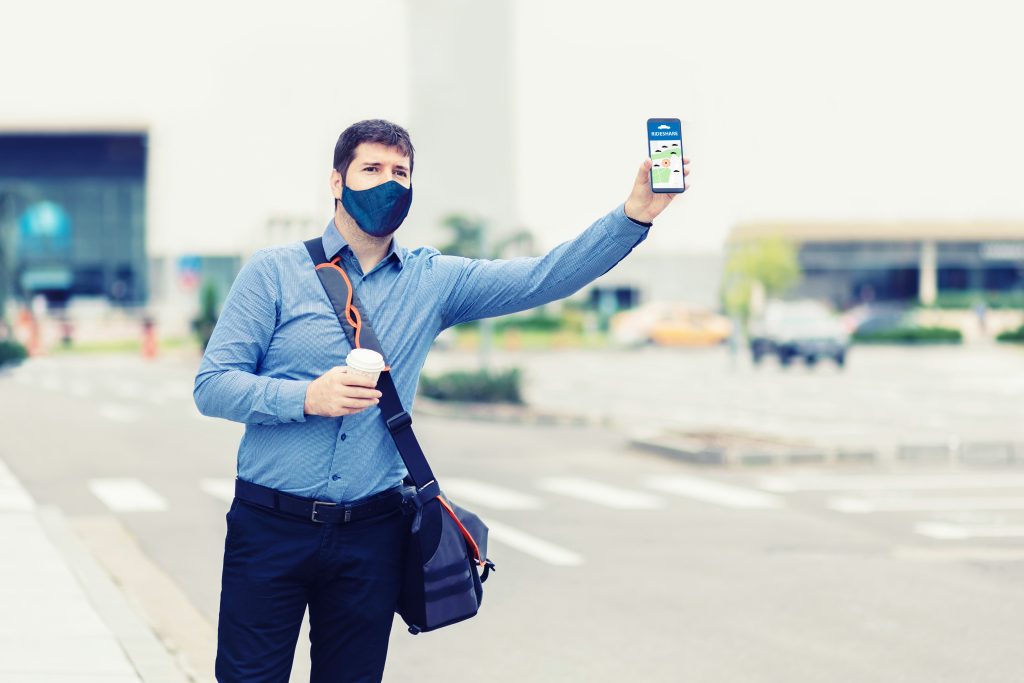How Ride Hailing Will Change In The Post-Pandemic Era

The coronavirus 2019 (COVID-19) has brought a drastic impact to public health and the world economy, including the transportation sector. In the past, people can crowd in buses and trains. But everything has changed when the pandemic struck like lightning. At least, the discovery of vaccines provides relief, paving the way to the post-COVID era.
The post-COVID pandemic era is about to come as more people are receiving vaccines to fight the virus. Since safety protocols, such as social distancing and wearing face coverings are still enforced, the transport industry provides ride hailing services to the masses in compliance with public health laws. So, how does ride hailing will change in the post-pandemic era?
This article will cover the emerging and future improvements and technologies of ride hailing and general transport networking services.

1. Utilization Of More Robust Back-End Management Tools
Ride hailing is a type of transportation network service that people seek nowadays to get them to their destination. A rider can book a trip using a smartphone and choose a personal driver near the area. The driver picks up and onboard the passenger, taking the fastest and safest route to avoid traffic and ensure on-time drop-off.
As more business-minded people are getting more interested in starting a ride hailing or carpool business, the development of more robust backend management tools is underway. Operators can vouch for the benefits of a ride hailing platform, providing a self-serve web-based tool for smoother operations.
The following are existing features and possible changes in back-end transportation management tools:
- Prompt Driver Payments: Drivers of transport network services don’t need to wait for days or weeks to receive their payments because operators can expedite payouts using a ride hailing platform. Drivers can receive their payments in real-time or within their preferred payout date.
- Harnessing API Power: With an application programming interface (API), riders can use any existing transit app in booking an on-demand ride.
- Real-Time Tracking: A simulation testing environment powered by AI bots can help operators track vehicles and trips in real-time remotely, thereby powering mobility companies and transit agencies.
2. More Environmentally Friendly Ride Hailing Services
Zero emission ride hailing service is eco-friendly. In the post-pandemic area, having more streamlined operations is made possible using automated technology, delivering an excellent rider experience.
Many mobilities and transport companies and agencies find electric vehicles (EVs) worthy investments, allowing them to comply with environmental laws and attract more customers. Using the right data-driven platform and technologies, managing an all-electric fleet ride hailing business is a lot easier than ever, optimizing EV-specific operational insights.
Electric vehicles and artificial intelligence join forces for a more sustainable transportation sector, reducing carbon footprint and other environmental impacts. This synergy promotes advanced artificial intelligence for vision and interference software for planning which is geared towards full self-driving.
3. Autonomous Technologies
Autonomous technology enhances automated systems with analytical capabilities, sensors, and Artificial Intelligence (AI). In this way, machines can make independent decisions and actions based on gathered data.
Autonomous vehicles have the capability to sense the environment and operate without human intervention. A human passenger can go anywhere using an autonomous car, which is a foreseen bright future for the ride hailing sector as well. Autonomous technologies promise to reduce costs on hiring more drivers and a new market for carmakers.
According to a trusted source, giant companies are getting ahead with autonomous technologies based on the stock exchange prediction, showing increased capitalization in ride hailing technologies. In the post-pandemic era, more research and development and capital spending are projected towards autonomous technologies.
4. Enhanced Safety Measures
Passenger safety is always the number one priority of ride railing services. At the moment, companies undergo a multi-step safety screening before their first trip to detect driving violations. In addition, calling the emergency hotline using the ride hailing app is now possible, which displays the rider’s live location making their travel details shareable to the emergency responder.
A 2018 published paper about ride-sharing services passenger safety pointed out reports of assault, robbing, and harassment of passengers because there were no strict measures or control over transport network service (TNS) drivers. There were several suggestions provided such as the installation of distress alarms and enforcing watchdog networks.
As time passes by, TNS companies offer new safety measures to ensure passenger safety. In the post-pandemic area, more people will continue using ride hailing services. Hence, mobility and transit companies are investing in more safety technologies, such as self-driving units.
Conclusion
In the post-pandemic era, ride hailing tools will become more advanced and user-friendly to operators, drivers, and riders. There will be more advanced features, tools, and technologies after the pandemic because the competition is tougher for companies trying to outpace each other. Many companies have promising plans and offerings, making ride hailing more convenient, safer, and environmentally friendlier than traditional transport services.






